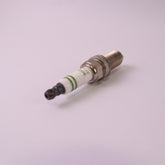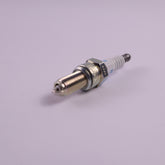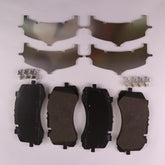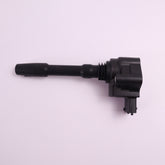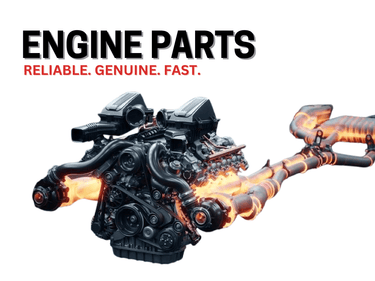Tire Pressure Monitoring System (TPMS): What It Is, How It Works, and Why It Matters
 Keeping your car road-ready involves more than just refueling and changing the oil. One often-overlooked system quietly working to keep you safe and save you money is your Tire Pressure Monitoring System (TPMS).
Keeping your car road-ready involves more than just refueling and changing the oil. One often-overlooked system quietly working to keep you safe and save you money is your Tire Pressure Monitoring System (TPMS).
Though it might seem like just another dashboard light, the TPMS plays a vital role in maintaining your car’s safety, fuel efficiency, and tire longevity. Proper TPMS maintenance including sensor repair, replacement, or resetting—can improve performance, extend tire life, and help you avoid costly repairs.
What Is a Tire Pressure Monitoring System (TPMS)?
Your TPMS continuously monitors your vehicle’s tire pressure and alerts you when one or more tires drop below the recommended PSI.
Maintaining correct tire pressure is critical for safe and efficient driving, and your TPMS helps prevent problems before they start.
Why Proper Tire Pressure Matters
Under-inflated tires can:
- Reduce your vehicle’s handling and braking capability
- Lower fuel economy
- Increase tire wear on the edges
- Cause overheating, which can lead to dangerous blowouts
By warning you early, your TPMS ensures your tires are properly inflated and your vehicle remains safe to drive.
How Does a TPMS Sensor Work?
Most modern vehicles use tire pressure sensors inside each tire to measure air pressure and relay that information to your car’s onboard computer.
There are two main types of TPMS systems:
1. Direct TPMS
- Uses sensors inside each tire to measure air pressure directly
- Offers highly accurate readings
- Slightly more expensive but more reliable
2. Indirect TPMS
- Relies on wheel speed sensors instead of measuring air pressure directly
- Detects pressure loss when a tire’s diameter changes and spins faster than others
- Less accurate but more cost-effective
The Benefits of TPMS Maintenance
While the TPMS doesn’t require regular maintenance beyond repairs, replacements, or resets, neglecting it can impact several areas of your vehicle’s performance.
1. Improved Fuel Economy
Low tire pressure increases rolling resistance, forcing your engine to use more fuel. Even a small drop in pressure can reduce gas mileage—costing you more at the pump.
2. Extended Tire Life
Underinflated tires wear out faster, especially along the edges. A functioning TPMS reminds you to keep your tires properly inflated, helping you get the most miles out of every set.
3. Enhanced Safety
Driving with low tire pressure can reduce traction, braking ability, and stability—especially at high speeds. Your TPMS provides early warnings to prevent flats and blowouts, keeping you and others safe.
4. Optimized Vehicle Performance
Proper tire pressure improves steering response, ride comfort, and braking performance. A well-maintained TPMS ensures your vehicle performs at its best.
TPMS Warning Lights: Common Questions Answered
Understanding the TPMS warning lights on your dashboard helps you know when and how to respond.
What Does the Tire Pressure Warning Light Look Like?
The standard TPMS light appears as a horseshoe-shaped icon with an exclamation mark (!) in the center.
If You See It:
Check all four tires (and your spare, if applicable) using a tire pressure gauge. Inflate any underinflated tires to the recommended PSI.
Why Is My TPMS Light Flashing?
A flashing TPMS light typically means there’s a system malfunction—possibly due to a faulty sensor or dead battery.
If You See It: If the light flashes briefly and then stays solid, check your tire pressures first. If it continues flashing, schedule a diagnostic inspection to determine if a sensor replacement is needed.
What Does “Check TPMS” Mean?
This message usually signals a sensor malfunction rather than an actual tire pressure issue.
If You See It:
A professional technician can run diagnostics to locate and fix the problem—whether that means resetting or replacingTPMS components.
What Does “Service Tire Monitor System” Mean?
This warning indicates your vehicle isn’t detecting one or more TPMS sensors.
Is It Safe to Drive?
If you’ve manually confirmed that all tires are properly inflated, it’s generally safe for short trips. However, you should have your TPMS serviced as soon as possible to restore accurate monitoring.
Final Thoughts: Don’t Ignore Your TPMS
Your Tire Pressure Monitoring System is one of the simplest yet most effective tools for improving your car’s safety, performance, and efficiency.
By paying attention to your TPMS alerts and addressing sensor issues promptly, you’ll not only stay safer on the road—you’ll also save money on fuel and tire replacements in the long run.
Editor’s Picks
Genuine Brake Caliper Gasket Set OE Part For Porsche 928 1987-1995 95135291911
- Dhs. 198.00 AED
- Dhs. 198.00 AED
- (-0%)
- Unit price
- / per
Genuine Air Filter For Maserati Ghibli, Levante, Quattroporte 670001545
- Dhs. 212.00 AED
- Dhs. 212.00 AED
- (-0%)
- Unit price
- / per
Genuine Spark Plug For Porsche 911, Boxster, Cayman, Panamera, Cayenne 99917015190
- Dhs. 79.00 AED
- Dhs. 79.00 AED
- (-0%)
- Unit price
- / per
Genuine Ball Joint For Ferrari 458 Italia, 458 Spider, California T 157630
- Dhs. 458.00 AED
- Dhs. 458.00 AED
- (-0%)
- Unit price
- / per
Genuine Ignition Coil With Spark For Bentley Bentayga 07P905110B
- Dhs. 324.00 AED
- Dhs. 324.00 AED
- (-0%)
- Unit price
- / per




